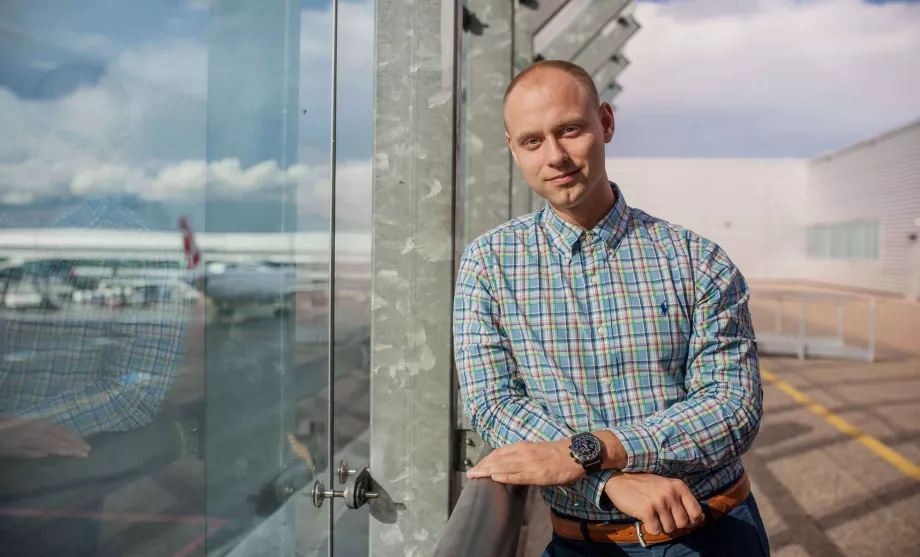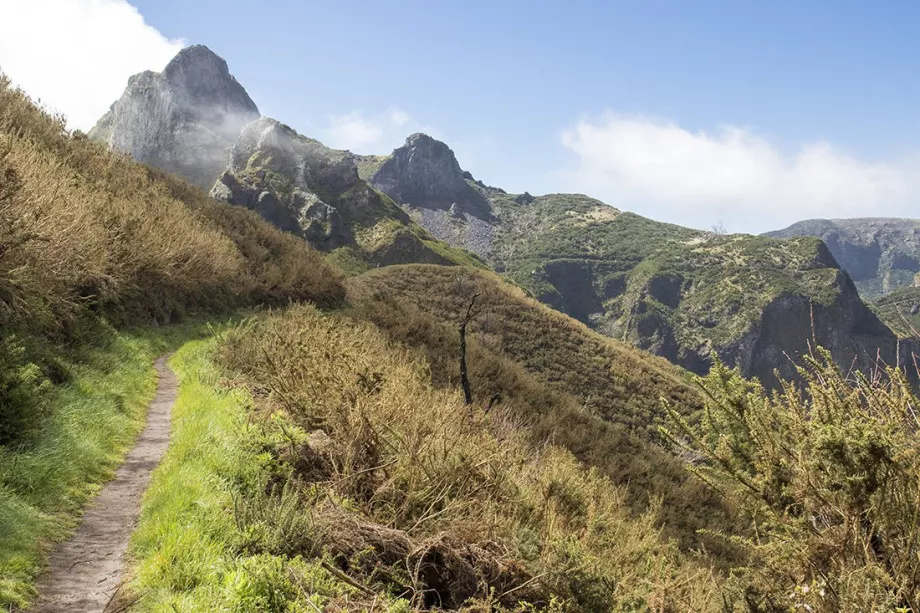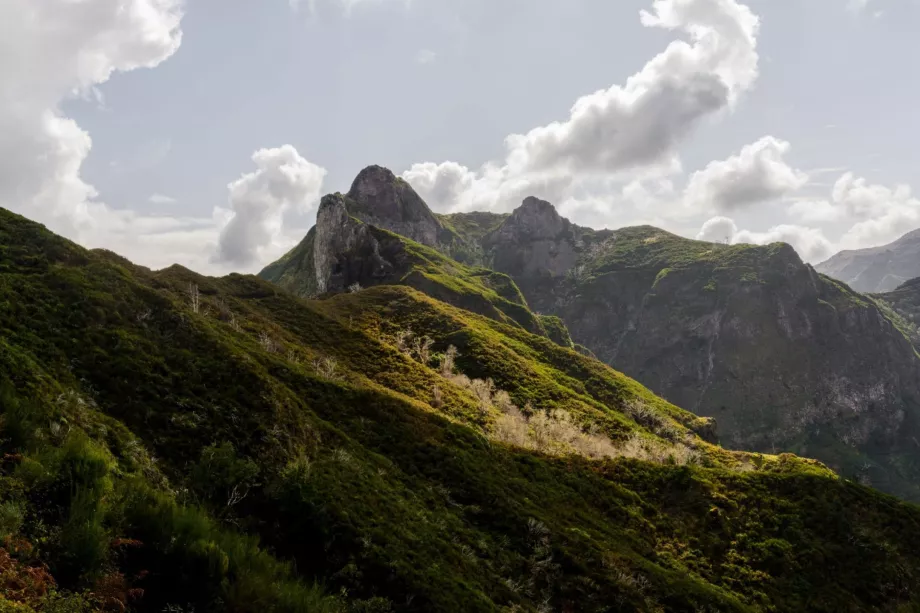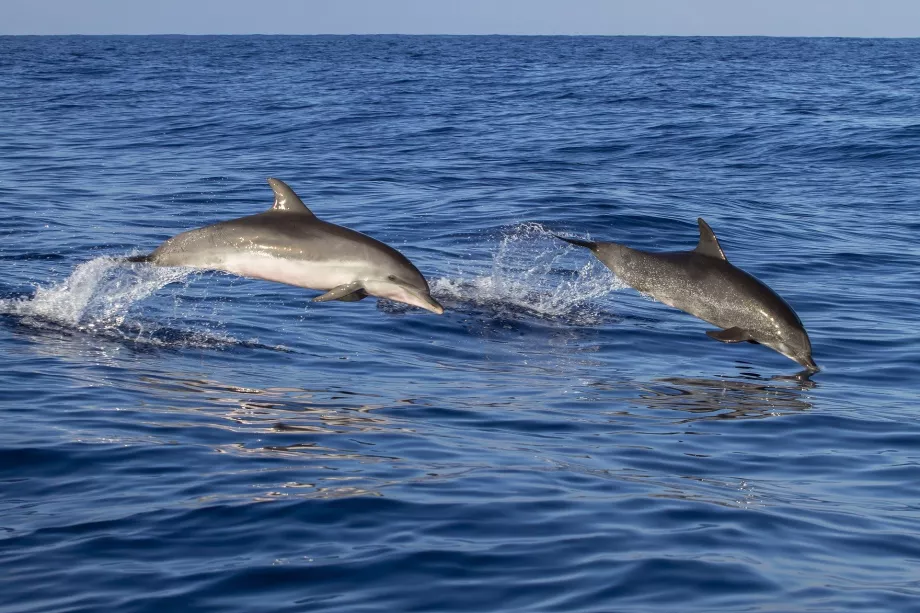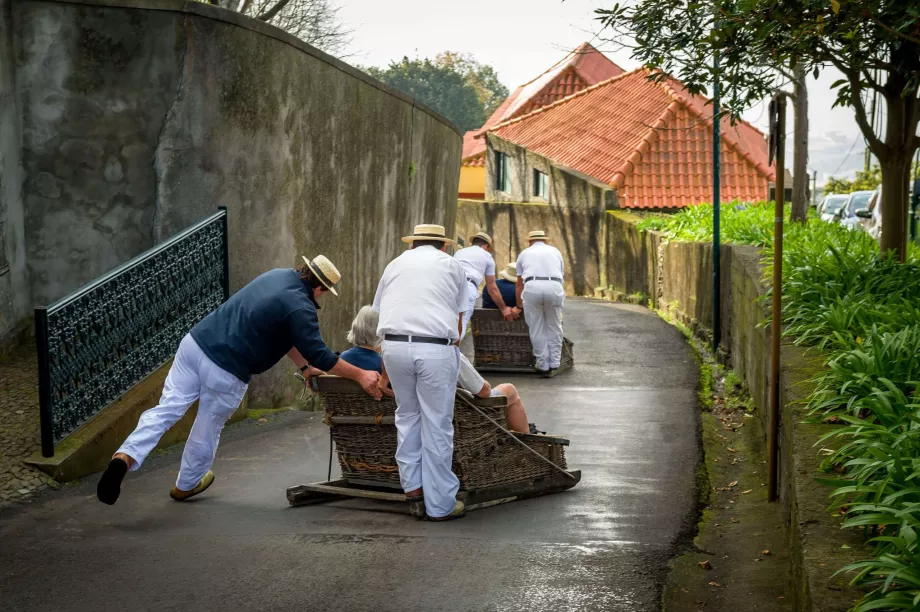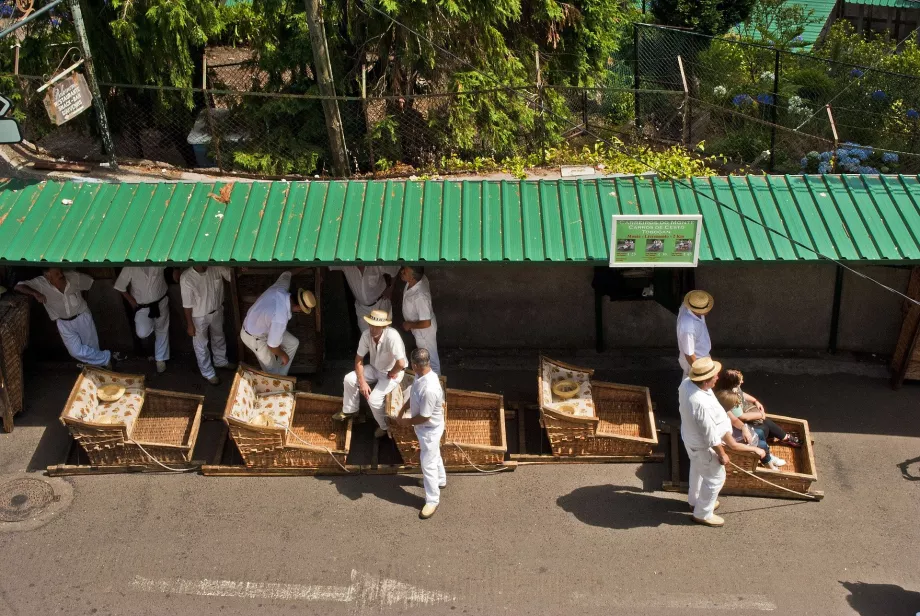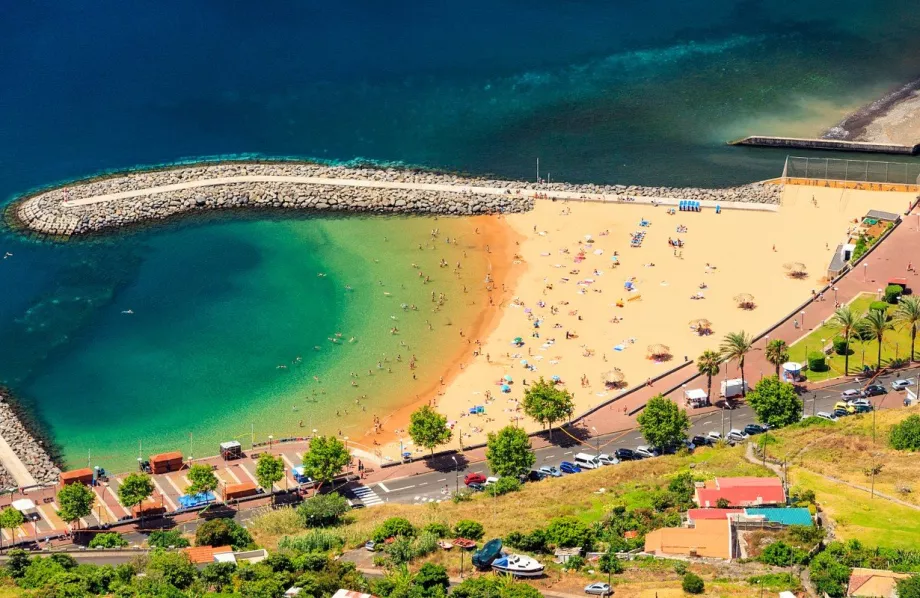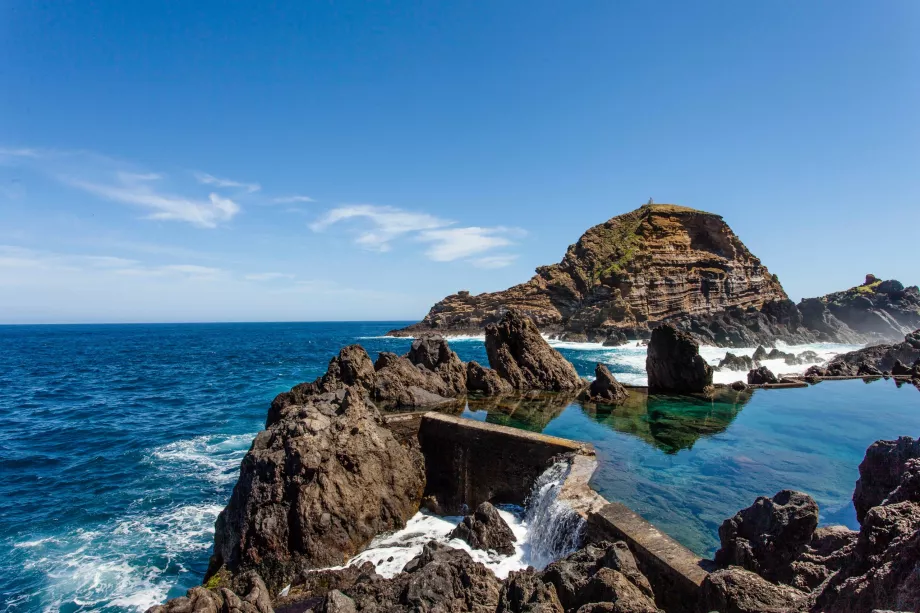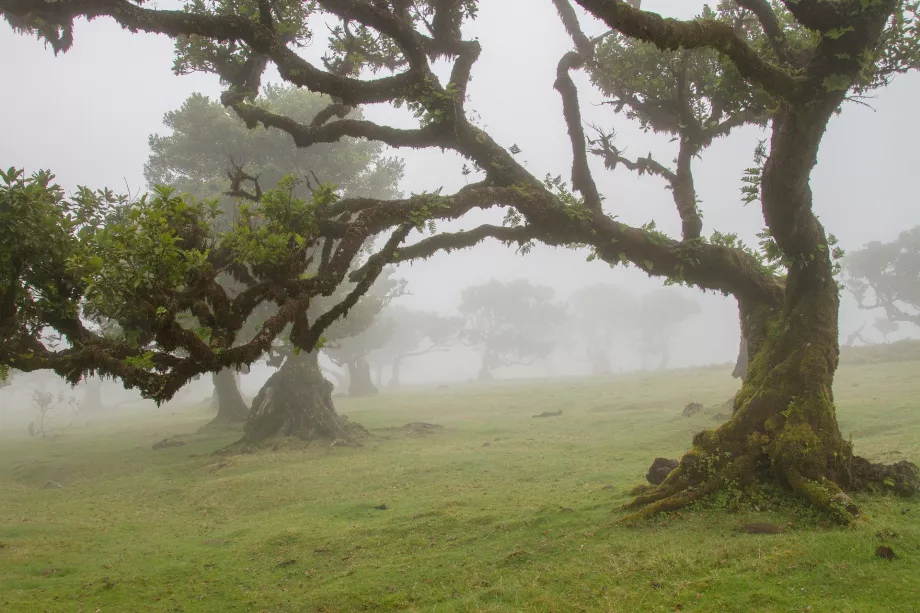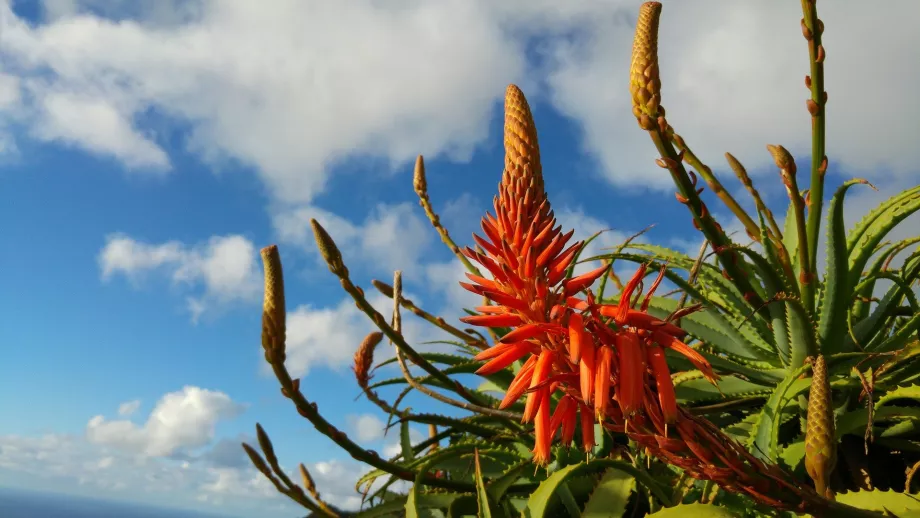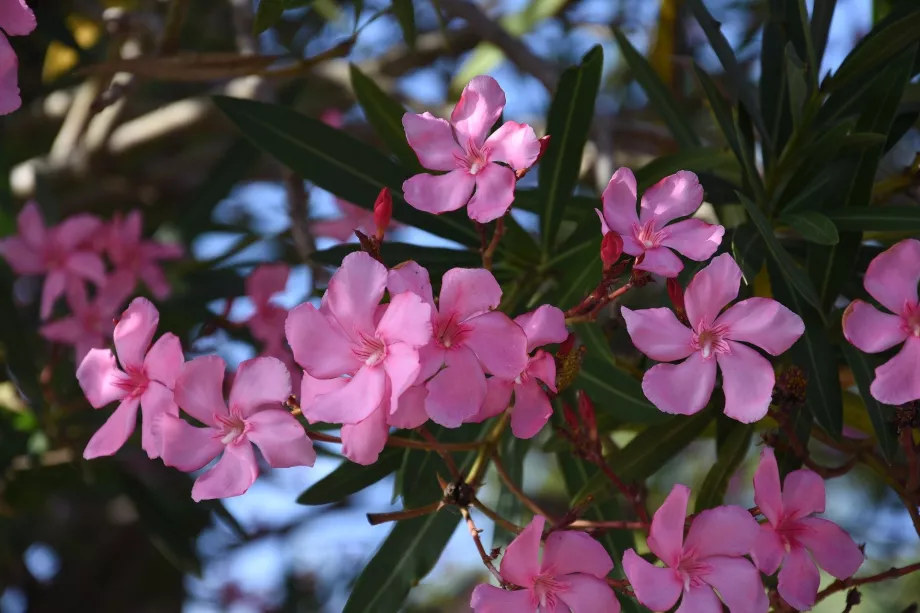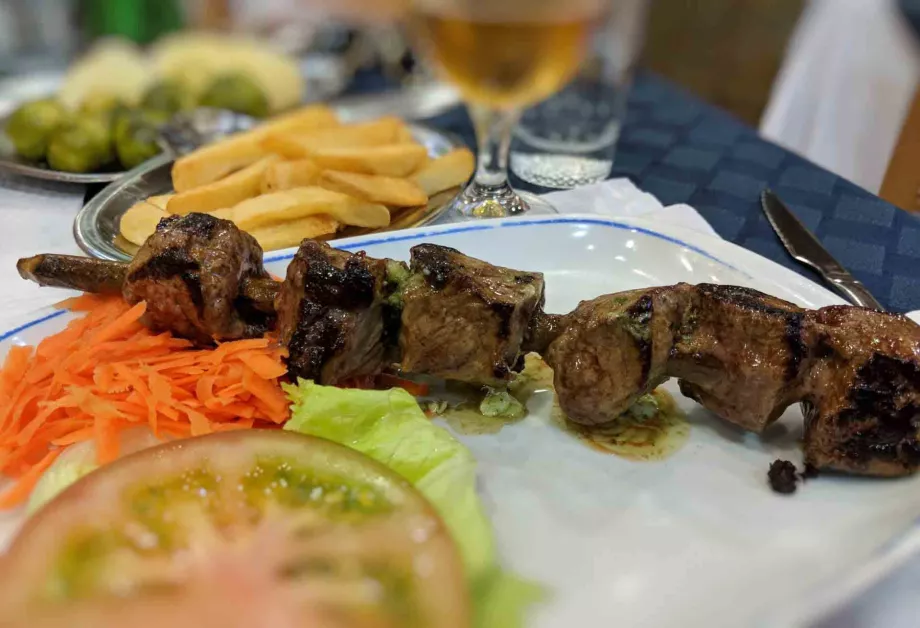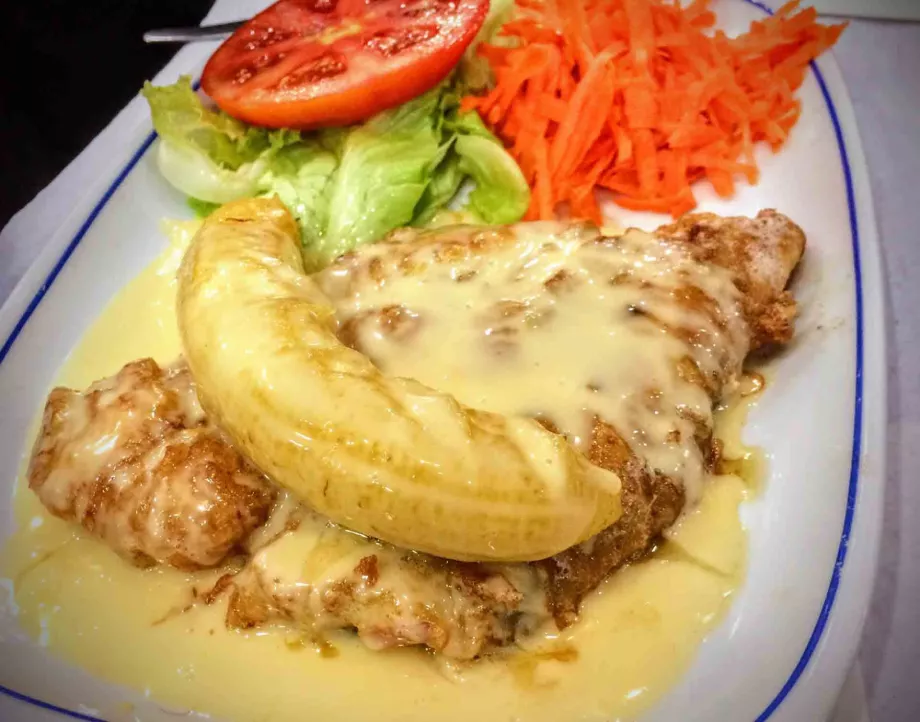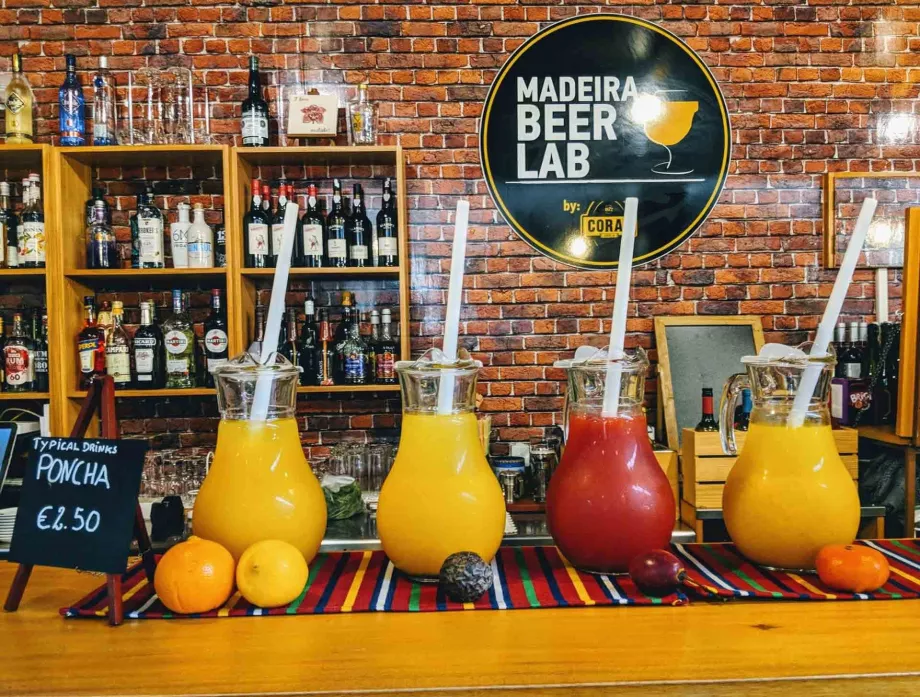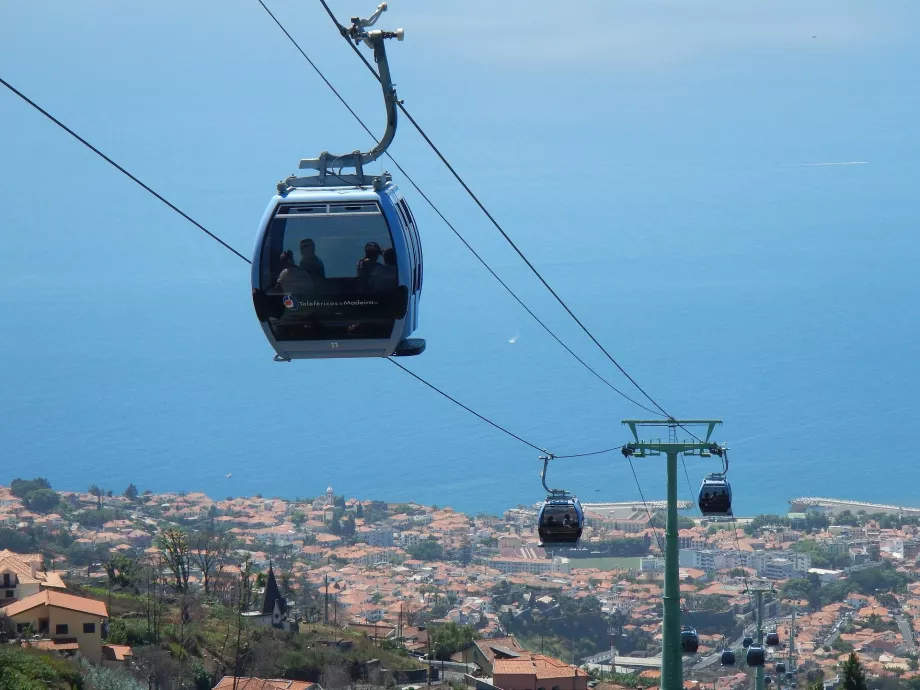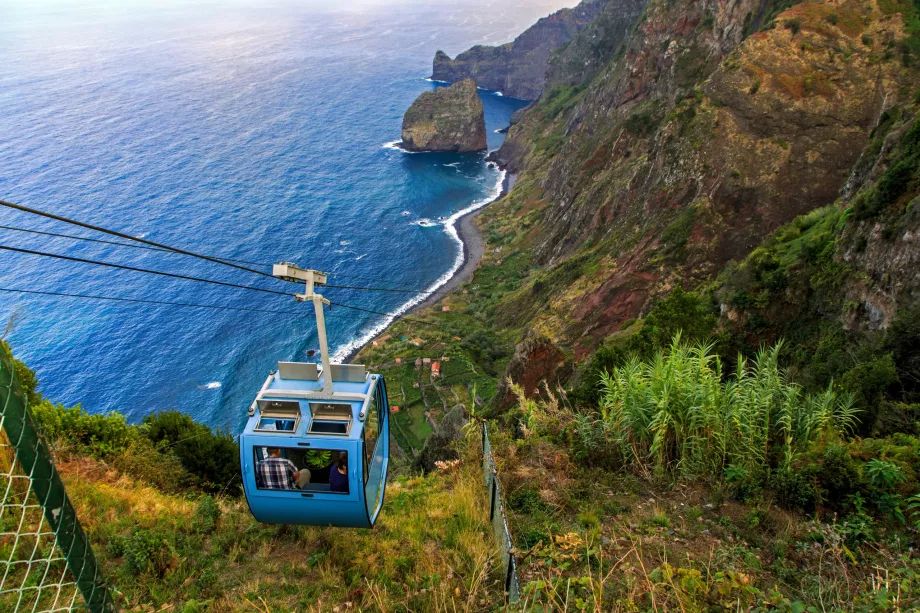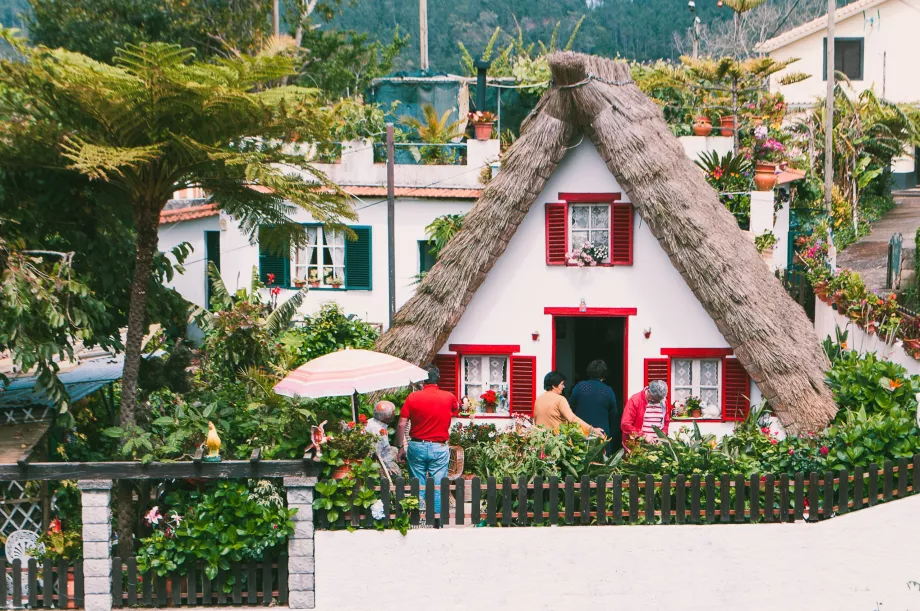What to do in Madeira
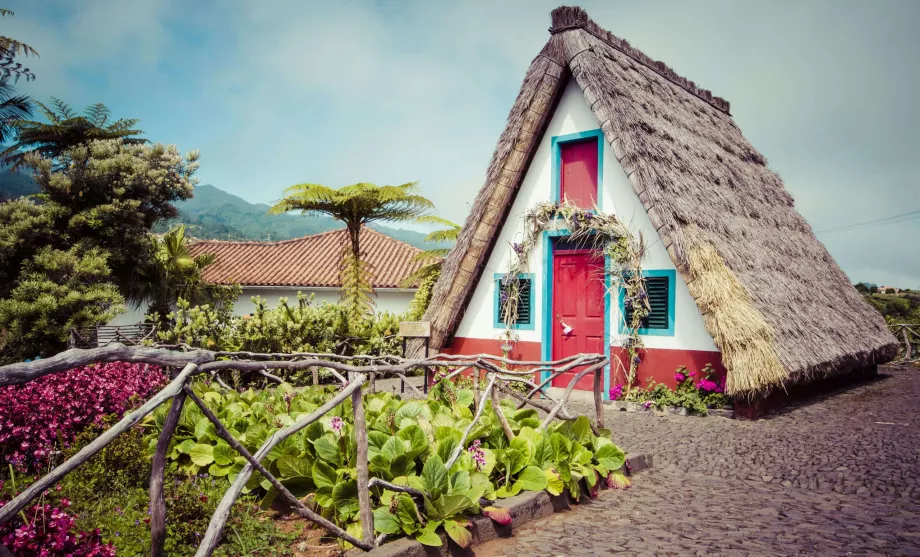
How to have fun on Madeira? What activities are worth travelling to Portugal's largest island for?
Hiking
With hundreds of kilometres of accessible irrigation canals (levadas) and other marked trails, Madeira encourages walks of varying length and difficulty. As the levadas are built at different altitudes, each levadas will give you new views of the landscape.
Book your car rental in advance
Online maps of hiking routes are very well provided by the portal mapy.czwhich has all the major routes in its hiking version also plotted in Madeira.
In addition, you can make use of a very good mobile application in which you can also download offline maps of Madeira.
The roads in Madeira are signposted and at most crossroads you will find at least basic direction signs with mileage. Most of the roads are groomed into hiking trails and you will rarely come across downright dangerous places. Where necessary, there are railings or steps along the paths.
Charges for access to hiking trails
From 1 January 2025, the Madeira Regional Government has introduced charges and booking entry to all marked 'PR' walking routes.
The fee is 3 eur and must be paid in advance online at the official website simplifica.madeira.gov.pt.
The fee cannot be paid on the spot.
The current entrance fee is €3 for all official hiking routes marked with the letters "PR" and a number.
The most popular levadas
Madeira is largely visited thanks to the hiking trails along the levadas, a system of irrigation canals that criss-cross Madeira for more than 2,500km. The Levadas are truly for everyone, with easy trails near towns and cities that can be easily reached by bus, as well as more challenging treks high in the mountains with breathtaking views.
We've put together basic information and tips on the best levadas, including maps, distances and descriptions of elevation changes, in the chapter Levadas in Madeira.
The most popular routes outside the levadas
But it's not just along the water canals that Madeira's hiking trails run.
Pico Ruivo
The main point for classic hiking routes outside the levadas is the central mountain range with Madeira's highest mountain, Pico Ruivo. There are 4 main routes to this mountain alone.
Ponta de São Lourenço
Another important tourist area is the São Lourenço peninsula in the east of Madeira, where several marked trails follow the cliff edges through a landscape that is quite different from the rest of the island.
Caminho Real
The Caminho Real (translated as "royal road") has several hiking routes in Madeira. This is the original network of historic roads from the 16th to 17th centuries that connected the island through challenging terrain. On many sections you will still find the original cobblestones and stones. The roads are therefore relatively wide and comfortable to walk on, even though they overcome great differences in altitude. There are currently 4 historic "royal roads" serving as trail markers, most of which are long treks, but of course you are free to shorten them via other trails.
- Caminho Real 23 - A large circular trek around the whole island, the whole of which you can do in a week at the earliest,
- Caminho Real 24 - the popular 21.5km route from the north of Funchal through the interior of the island to Santana. It can be done in a day, takes around 7 to 9 hours, see route map,
- Caminho Real 25 - a challenging route through beautiful mountain territory where you won't encounter a live animal. It is 15 km long, but in places the road is unmarked and unmaintained, see route map,
- Caminho Real 28 - over 25 km of challenging trail across Madeira from São Vicente across a plateau at over 1,500 metres to Ponta del Sol, trained individuals can complete it in one day, see route map.
Dolphin and whale watching
From Madeira you can also take away an unforgettable whale and dolphin watching experience.
The island is bathed by the warm Gulf Stream, which is a haven for migrating whales and dolphins, of which there are up to 36 species in the surrounding waters.
The steep shores and the seabed, which already reaches depths of over 2 km near the island, create ideal conditions for whales. The chance of seeing dolphins is almost 100%, but you will also see whales with a decent probability of around 40%.
When to go whale watching?
The best time to see dolphins and whales is between April and October. Dolphins in particular can also be seen in winter, but they are noticeably fewer in number.
How much do sightseeing cruises cost?
There are several agencies on the island that specialise in this experience and offer sightseeing cruises, usually either on a comfortable large catamaran or on a small boat from which you can often touch the whales or dolphins and even swim with them depending on weather conditions.
Cruises usually last between 2 and 4 hours. Prices are roughly along these lines:
- Cruise on a large catamaran: approx. 30 eur
- Cruise on a small fast boat: approx. 45 eur
- Boat cruise + snorkelling with dolphins: approx. 70 eur
See examples of agencies that offer whale and dolphin watching cruises:
- Ocensee (Funchal)
- VMT Madeira (Funchal)
- Magic Dolphin (Funchal)
- Oceanodroma (Machico)
- Madeira Sea Emotions (Ponta de São Lourenço)
- Lobosonda (Calheta a Ribeira Brava)
Wicker sleigh ride
Sledding on an island in the subtropics where only the highest parts of the mountains know snow? No problem in Madeira.
In the days when there were no paved roads and cars were difficult to carry heavy things on hilly Madeira, a system of wicker baskets on wooden sledges was invented to carry mainly agricultural produce from the fields to the markets in the cities, especially Funchal.
Since the 1850s, the wicker sleigh has been used as a tourist experience, which was used by the famous American writer Ernest Hemingway during his stay on the island.
Today, the wicker sleigh ride is one of the most popular tourist experiences in Madeira. You can take a ride from the top of Funchal Monte, where a short walk from the Jardim Tropical Monte Garden you will find a station where men dressed in white uniforms with straw hats and special shoes, called carreiros, are waiting.
They then accompany you and correct the sledge, which travels at full speed down the road from the Monte. The journey down takes 10 minutes (2 km in total) and the prices are as follows:
- Sleigh for 1 person: 27,50 eur
- Sleigh for 2 persons: 35 eur/person
- Sleigh for 4 persons: 52,50 eur/person
- Children under 5 years: free
- Official website: carreirosdomonte.com
Monte can be reached by cable car Teleférico do Funchal or by public transport bus line 22. The end of the ride is at the intersection of Estrada do Livramento and Caminho de Monte, from where you can walk back to the centre or take public transport bus number 19.
You can ride in the wicker baskets every day from 9:00 to 17:45.
Beaches and swimming
Madeira may not be a typical swimming and beach destination, but surely few travellers from a country without a sea can resist the urge to take a dip in the Atlantic Ocean.
And Madeira doesn't disappoint in this respect either. Most of the coastline is more or less inaccessible under steep cliffs, and where hiking trails reach, there are usually rocky beaches with large pebbles unsuitable for swimming. However, even in Madeira you will find three beaches with fine sand:
- Machico - the main beach resort in Madeira with a beautiful sandy beach right in the centre, the sand is imported from the Portuguese mainland and Morocco.
- Calheta - a resort in the south of the island with a man-made beach protected from the waves by a stone wall, the sand is imported from Western Sahara
- Prainha - the only beach in Madeira with original natural fine sand from lava
You can also swim at the natural beaches right in Funchal, which are covered with finer pebbles.
Very popular in Madeira are the swimming pools built right by the sea and filled with seawater. There is usually only a low safety wall separating you from the ocean, but the bottom and surroundings of the pool are landscaped like any normal swimming pool. There is an entrance fee of just 1,50 eur at all swimming pools. These swimming pools are called "Complexo Balnear" and are the most popular in these locations:
In Porto Moniz and the nearby town of Seixal, you can also enjoy swimming in natural pools formed by lava fossils. They are landscaped only with low concrete walls and steps into the water.
Theocean water temperature is at its highest between July and the end of September, when it reaches up to 23 °C, and fluctuates between 18 and 21 °C the rest of the year.
Enjoy the unique flora
Madeira boasts a unique flora and many endemic species not found anywhere else in the world. Thanks to the favourable climate, you will find Madeira green all year round and always at least a little bit in bloom, although the most beautiful season is, like here, during spring.
Among the most famous plants are the old laurel forests that grow all over the island. A walk through these lands is like a trip to fairyland or a return to the deep past. Incidentally, the laurel tree is the source of the spice known to us as bay leaf. One of the most important endemics is the dracena tree, resembling the small African baobabs.
Walking around Madeira, you will always be amazed by the colourful flowers of aloes, lilies, hibiscus, bougainvillea, camellias and rhododendrons. The royal blue calla lilies or the red berries of the Azorean holly are ubiquitous, as are the majestic eucalyptus trees.
Taste the Madeira specialties
Madeira's cuisine is a little different from traditional Portuguese cuisine, and much better. Logically, the main ingredients of Madeira specialties are fish and seafood, but also fruit or beef. Madeira's cuisine is tasty, but at the same time relatively light and easy to digest. Join us for a look at the best Madeiran specialities.
Pleasant restaurants can be found in all towns and villages and in almost 100% of cases it is impossible to miss. The restaurants care about the customer and you will hardly come across any really bad establishments. For a full lunch or dinner you can pay between 15 eur and 25 eur.
Soups
- Sopa de tomate e cebola - very popular tomato and onion soup with oregano
- Sopa de trigo - a rich wheat soup with large chunks of vegetables
Main courses
- Espada - the biggest specialty you will find in any restaurant. It is a deep-sea predatory fish that is served in many ways, especially with honey, pepper or lemon and served with potatoes or calmly fried bananas. It has very tender meat and almost no bones.
- Tuna steak - a traditional dish across the coastal regions of Europe, Madeira not excluded. A very popular dish most often marinated in olive oil, garlic and salt.
- Lapas, the only mollusc found in Madeira, is a popular starter. It is usually served lightly fried in butter and drizzled with lemon.
- Espetada - a traditional meat dish made from beef, served as a skewer. The meat is usually coated in garlic and salt and is most often served with cubes of corn polenta (milho frito)
Traditional fruit
- Maracuja - the most popular fruit in Madeira, which makes great juices or desserts
- Chestnuts - the Curral das Freiras valley grows some of the largest edible chestnuts in the world, which are made into liqueurs, desserts or soups and are one of Madeira's main specialities
Alcoholic beverages
- Madeira wine - the most popular local alcoholic drink. It is a specific fortified wine fortified with grape spirit, similar to port wine. Madeira runs the gamut from dry aperitif wines to very sweet wines for desserts. The wine is fermented in oak barrels or steel tanks and, unlike other wines, it is heated to a very high temperature after the fermentation process, which gives it its specific flavour.
- Poncha - A very specific and delicious drink that contains sugar cane spirit (rum), sugar, honey, lemon and passion fruit juice. Poncha can be bought in every kind and is the national drink of Madeira. Beware, depending on the mixing style, it can contain over 50% alcohol!
- Nikita - a refreshing drink made with orange or passion fruit juice, beer and vanilla ice cream
- Coral - Madeira's best-selling beer is very tasty and made from Czech malt and hops.
Viewpoints and cable cars
With its hilly topography and the hundreds of metres high cliffs that border the entire island, Madeira is the ideal place for lovers of views and sightseeing.
Literally every few hundred metres you'll come across rest areas on the roads with benches and tables overlooking the never-ending beauty of the ocean, mountains, cliffs and evergreen flowering landscape.
It was literally throwing peas at the wall to describe all the sights in Madeira, there are thousands and thousands of them.
Among the most famous ones is the Cabo Girão lookout on one of the highest cliffs in Europe, which measures more than 500 metres.
Lovers of unconventional views from unconventional means of transport will also enjoy Madeira.
The island is served by 8 cable cars (see map of all cable cars), mostly built between 2001 and 2008. Many of them cover very steep sections over short distances. Apart from the cable cars in Funchal and Garajau, the primary purpose of all the others is to transport farmers to the fields by the sea, but all the cable cars also serve tourist purposes.
- Teleférico do Fucnhal - Madeira's longest cable car from the centre of Funchal to Monte Hill with the Jardim Tropical botanical garden, price 16 eur for a return trip, 11 eur one way
- Teleférico do Jardim Botanico - the second longest cable car connecting the two botanical gardens in Funchal, price 12,75 eur for a return, 8,25 eur one way
- Teleférico do Rancho - cable car on the eastern side of the Cabo Girão cliff, price 10 eur for a round trip
- Teleférico da Fajã dos Padres - cable car on the west side of the Cabo Girão cliff, price 10 eur for a return ticket
- Teleférico das Achadas da Cruz - cable car near Porto Moniz in the northeast, price 3 eur for a return ticket, more info on the location details
- Teleférico do Garajau - cable car from the statue of Christ the King to the beach, price 3 eur for a return ticket, more info on the site details
- Teleférico da Rocha do Navio - cable car at Santana from the cliffs down to the sea, the cable car is out of service
- Teleférico do Larano - cable car from the cliffs to the sea in Porto da Cruz, price 1,50 eur for a return trip
Behind the typical shepherd's houses
Many travel brochures or illustrative photographs of Madeira show cute little triangular-shaped houses, usually with red doors, shutters and soffits, blue-framed windows and white walls. But the colours can be varied. The roof is made of seagrass and has to be completely replaced about every 3 years.
The houses are called casas de colmo and were mainly used by shepherds and farmers in rural areas throughout Madeira. The first references to these houses date back to the 16th century, but the casas de colmo that survive today are usually less than 100 years old. Their interiors are very small to cramped, but not surprisingly so. Given the good weather and the constant work in the fields, the houses were only used for sleeping and shelter from the rain anyway.
Although they used to be scattered all over the island, today they are only preserved in the village of Santana in the north-west of Madeira. There are 4 houses right in the centre of the village, many more scattered around the village and the largest concentration of man-made replicas can be found in the open-air museum near the centre of the village.
Trip to Porto Santo Island
If you're coming to Madeira for an extended period of time (at least a week or more) and you're craving an off-island trip, the ideal (and in fact only) candidate is the adjacent island of Porto Santo, 57km away as the crow flies.
Porto Santo is significantly smaller than Madeira and also completely different. The island is much drier, with no significant vegetation and is mostly green with grass and herbs between October and May. It is a popular destination for beach hiking, as its entire southern coastline is covered by more than 5 km of fine sand beach.
The water and air temperatures here are virtually identical to Madeira.
Porto Santo can also be reached on a day trip by air. The service is operated twice a day (morning and evening) by Binter Canarias and a return ticket costs around 80 eur. When buying, be sure to tick the box that you are not a resident to avoid paying the cheaper local fare at the airport. The flight takes about 20 minutes.
The other option is to use the ferry that runs from the centre of Funchal to the Porto Santo dock just off the beach. The trip takes 2.5 hours and a round trip ticket works out to about 60 eur. Even the ferry trip can be taken on some days for a turn around. Usually there is a morning ride from Funchal and an evening ride back from Porto Santo. Tickets can be bought online and timetables checked at portosantoline.pt.
Planespotting at the airport
Madeira's airport is one of the most famous and beautiful in the world. Its runway is partially extended on high concrete pillars and lies on a narrow strip of flat land between the sea, the surrounding hills and the dense development of eastern Madeira.
The landing on Madeira is one of the most difficult and beautiful in the world. As a passenger, there is no need to worry, only properly trained, experienced pilots can fly into Madeira and there has never been a serious incident at the airport in its history.
And as an aircraft observer you can rejoice, because at the airport you will take the best photos of landing planes with a backdrop of mountains, cities and the sea.
We guarantee that watching and photographing planes at Funchal Airport will not only be fun for aviation enthusiasts, but for everyone.
For the most comprehensive map and description of where to get the best photos of planes, visit the traditional "spotter" website spotterguide.net.
Any questions left?
If you have any questions or comments about the article...
